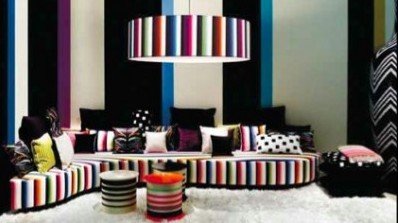Hotels: The Latest in Italian Luxury Labeling: Boutique hotels and villas by top designers make a smart aesthetic – and business –– statement
Some of the biggest names in Italian design and fashion have a new way to enjoy their aesthetic luxury, to become enveloped in its greatness instead of just wearing it. This new phenomenon comes in the form of design or boutique hotels, located in some of the most alluring cities in the world.
The Versace Mansion, transformed by Barton G. into The Villa , in South Beach, Miami, has attracted the likes of John Elton, Madonna and Sting. As the residence was slowly morphed from the Versace Mansion to The Villa, most of the late designer’s ideas for the building remained intact, keeping with elegant luxury and staying away from a Hefnerstyle Playboy mansion. Golden mosaics,
Italian marble, coral columns, an enormous pool and an observatory are just some of the invigorating aspects of this hotel.
On the picturesque Amalfi Coast near Positano sits another luxurious getaway, Villa Tre Ville , the previous residence of renowned set designer and director Franco Zeffirelli. As per the name—villa of three villas—this hotel is separated into a number of separate buildings, each suite with its own name, story and color scheme. There is La Dimora, the main residence; Villa Rosa, the pink residence; Villa Azzurra, the blue residence; Villa Bianca, the white residence; and Villa Tre Pini, the residence of three pines.
The Armani Hotel was built across ten floors of the Burj Kalifa, which happens to be the tallest man-made structure ever built, in the oasis of the city Dubai.
The seamless design of this hotel models Armani’s elegant subtlety with curved walls adorned with Florentine leather, Japanese Tatami arranged on the floors and dark colored walls that cultivate a relaxed and sophisticated environment away from the brutal Dubai sun.
The Hotel Missoni in Edinburgh was designed with a black and white foundation but also added a mix of vibrant colors to please the eye. Staying in synch with the Missoni style, each room of the hotel features bold patterns, fine linens, attention to detail and surprising use of color.
The Hotel Moschino in Milan used to be a busy train station in the mid 19th Century, but Rossella Jardini, Jo Ann Tan, and Luca Strada Associati have transformed the space into a hotel unique and demonstrative of the eccentric Moschino style. Each room emulates a calm and organized luxury, which is aimed to cultivate the relaxation of a sleep state and cater to the wants of dreams.
These luxurious wonderlands will cost the consumer from around 1,000 Euros for the smallest room to 5,000 Euros a night.
